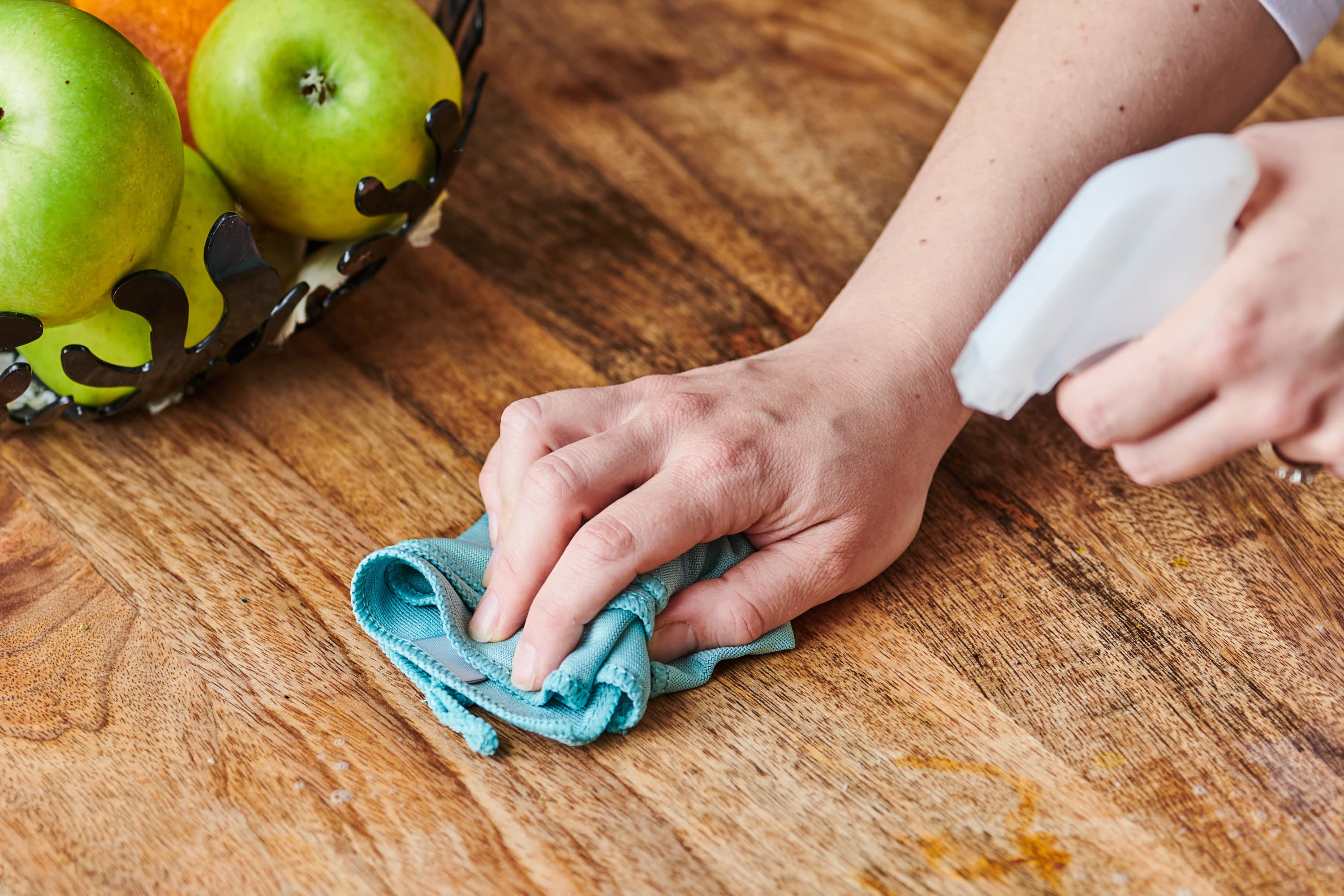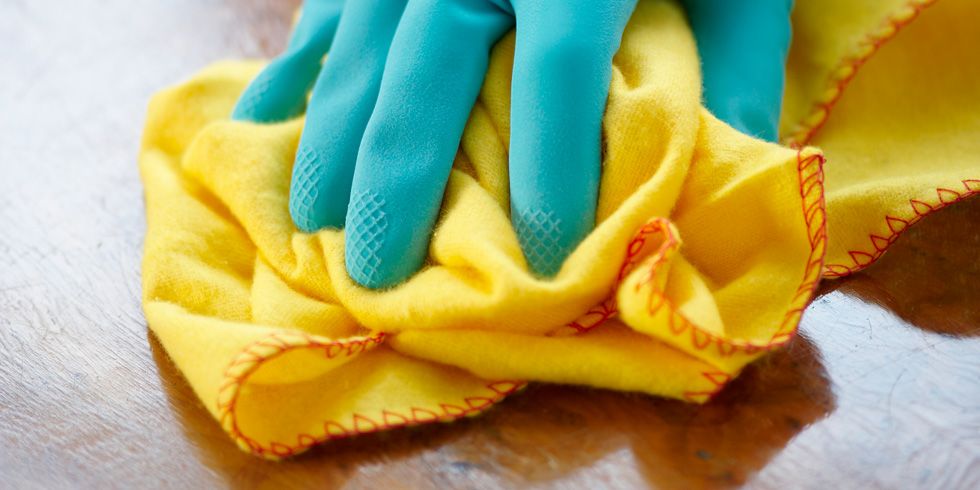Do you struggle to keep your home sparkling clean? Take a deep breath and relax, we have the perfect solution for you-dust cloths!
This guide will show you why dust cloths are a great choice for keeping your home clean and how to best use them. Come learn with us to make house cleaning an effortless task!
With the ever-increasing popularity of hardwood floors and other surfaces such as tile and counter tops, many people have begun to question the efficacy of dust cloths. Dusting these surfaces can be difficult with conventional cleaning methods, and an effective cloth can make all the difference.
In this guide, we will outline the different types of dust cloths available on the market, their specific pros and cons, and how to choose the best one for your needs. We also include tips for proper dusting technique to ensure that your home is clean and healthy.
Read on to learn more about dust cloths!
Types of Dust Cloths
In the world of dust cloths, there are many types and styles to choose from. Each cloth is tailored to a particular purpose, so let’s go through them one by one.
Microfiber Cloths: Microfiber cloths are ideal for cleaning everyday household surfaces such as countertops, appliances, windows, mirrors and furniture. Their small fibers are able to trap dirt particles more effectively than a cotton cloth, giving you a deeply clean surface that isn’t greasy or smudged. Plus, microfiber cloths don’t require any chemicals for cleaning – just spray or dab the surface with water and then glide the material across it in circles until the area is dry.
Cotton Cloths: These absorbent rags pick up dirt and debris quickly and easily without scratching delicate surfaces. Cotton works best for dusting furniture because its fibers can reach into crevices and remove built-up grime. Cotton is also great at polishing wood furniture when used with wax polishes or oils.
Lint-Free Cloths: Lint-free cloths are great for wiping down electronic items like phones, tablets and laptops because they don’t leave behind any lint or dust particles. They can be used in combination with alcohol-based cleaning solutions to be extra sure that there aren’t any streaks left behind after cleaning has taken place.
Dusting Mops: Dusting mop heads come in all shapes and sizes; from full-size mops to hand-held swiffers designed specifically for hardwood floors or high shelves. They effectively pick up dirt from your floors but also evenly distribute wax for a polished finish that radiates over time!

Different types of dust cloths
When you’re dusting your home, it’s important to use the right type of dust cloth–otherwise, you can end up with a layer of lingering dirt. Dust cloths come in all shapes and sizes, and they’re made from different materials that suit a variety of cleaning tasks. Here is an overview of the most popular types of dust cloths.
Microfiber Cloths
These soft, thin dust cloths are often made up of polyester blends like polyamide and polypropylene. They are lightweight and highly absorbent, so they make quick work of removing surface dirt. Microfiber cloths hold onto small particles effectively and resist collecting germs or bacteria.
Cotton Cloths
Cotton is absorbent, making it ideal for lifting debris off delicate surfaces like wood furniture or glass windows without scratching them. Plain cotton flannel also works well for general dusting; however, using a dampened cotton cloth allows for better absorption of dirt particles than a dry one does.
Feather Dusters/Lambswool Dusters
These easy-to-use tools have feathers or soft lambswool attached to their handles. They make quick work of sweeping away cobwebs from ceilings without needing to get on ladders or chairs; however, the feathers can become unwieldy if too much pressure is used during cleaning. Regularly wiping these down with water or anti-static spray will prevent them from leaving residues.
Electrostatic Cloths/Mops
These cloths contain specialized yarn designed to create an electrostatic charge when rubbed over surfaces like table tops or window frames—this helps grab onto dust particles more quickly than other types do. Electrostatic mops feature similar yarn with either reusable mitt covers that can be turned inside out and washed in the washing machine or disposable pads that are simply thrown away after use.
Materials used in making dust cloths
Dust cloths can be made from a wide variety of materials, including cotton, microfiber, and synthetic fibers.
Cotton: Cotton dust cloths are highly absorbent and good at trapping dirt particles in their fibers. They also require little effort to keep clean as they’re machine washable. However, due to the material’s tendency to shrink over time and lose absorbency, they must be frequently replaced or laundered.
Microfiber: Microfiber dust cloths are made from an ultrasoft fabric that is both highly absorbent and highly effective at trapping dust. They don’t require frequent laundering or replacement like traditional cotton-based dust cloths and can be used both wet or dry. Microfiber dust cloths are best used alone on surfaces susceptible to scratches, such as screens and glass furniture, but are also quite effective for general cleaning purposes.
Synthetic Fibers: Synthetic fiber dust cloths are commonly made from petroleum-based fabrics such as polyester and nylon. These materials have high durability, but lack the soft texture of microfibers and can scratch surfaces more easily than other options available. Synthetic fiber dust cloths are best used when combined with other materials or on hardwood surfaces needing a mild scrubbing action to remove stubborn dirt buildup or stains.
Advantages and disadvantages of each type of dust cloth
Knowing the types of dust cloths available, their different applications and the advantages and disadvantages of each type is important when you’re cleaning. Depending on the type of surface to be cleaned, dust cloths can help make your life easier by removing dust and particles quickly and efficiently. Here is a breakdown of the different types of dust cloths available:
Cotton Dust Cloths – Cotton dust cloths are best for light wiping on most surfaces. They are very absorbent and pick up particles without leaving lint or residue behind. However, they have less gripping power and do not work well with rough surfaces or those that are highly textured.
Microfiber Dust Cloths – Microfiber dust cloths possess better gripping power than cotton dust cloths, making them ideal for rough surfaces or those with higher levels of texture. They attract dust particles better than cotton clothes and also do not leave any lint or residue behind. A disadvantage is that microfiber cloths can be more expensive than other types.
Synthetic Dust Cloths – Synthetic dust clothes are often made from similar materials as microfiber, but they tend to be less effective in attracting fine particles such as pet hair or lint while still providing excellent gripping power on tough surfaces including wood. Synthetic cloths may also be cheaper than microfiber varieties but will also require more frequent replacement since they do not hold up as well to washing cycles over time as microfibers do.
Choosing the Right Dust Cloth
Choosing the right dust cloth is an important step in achieving effective cleaning results. Cloths vary in their material, size, absorbency, color coding capability and other features that are important to consider when making a selection.
The most popular dust cloth materials consist of cotton terrycloth and microfiber. Cotton terrycloth fiber is more resilient for removing heavier dirt particles when dampened and wrung out. Microfiber has increased lint resistance, requires less water for cleaning efficiency and can pick up and holds more dust than most other fabrics. In addition to the fabrics discussed here, some manufacturers offer cleaning cloths made from wool blend materials or synthetic mix fabric blends.
The most common sizes for dusting wipe cloths are 12” x 12” or 16” x 16”; however some manufacturers produce a variety of larger sizes like 18″x18″, 20″x20″ or 22” x 22. Choosing the right size often depends on the size of your hand or preferred ergonomic fit handle (with wrapper-style system) while dusting furniture, ceilings or window sills or tight finishing jobs along baseboards with corners. Performance should ultimately determine the selection criteria; however lighter colors may reduce staining in long-term laundering of washable fabrics. Color coding systems assist with avoiding cross-contamination of towel+wipes used in separating tasks between non-dusting surfaces such as bathroom counters versus light duty dust wiping duties such as walls and shelving with glass accents.

Factors to consider when choosing a dust cloth
The primary purpose of a dust cloth is to gather dirt and dust from surfaces. This can take the form of wiping down hard surfaces like countertops, shelves, furniture and more. When choosing a dust cloth, there are several factors to consider.
Softness: One factor is the softness of the cloth. It should not scratch or damage delicate surfaces while absorbing dirt efficiently. To prevent damage to surfaces, materials such as microfiber are often used because they are very light and soft to the touch.
Absorbency: In order for a dust cloth to work well, it must also be absorbent. This means that it should be able to hold a lot of dirt and dust without becoming overly saturated quickly. Look for materials such as cotton or microfiber which are known for their absorbency capabilities.
Size: The size of the cloth you need will depend on what type of surface you’re cleaning and how much area needs to be covered with each pass. For example, if you’re cleaning a large table then you might opt for something larger than if you were just trying to tidy up around smaller objects like picture frames or vases which only require a smaller piece of material each time them is dusted off.
Texture: A final consideration is that some dust cloths have more texture than others which can help really trap debris in order to give you an even better cleanse when going over any surface area with these items. Look for something with an embossed or waffled pattern that would create an even spread pattern when trying to reach hard-to-reach places where extra fabric may be required.
Understanding the cleaning needs and surfaces
When it comes to cleaning, understanding the needs of your surfaces is critical to getting the job done efficiently and safely. Different surfaces have different needs when it comes to cleaning, such as choosing the right dust cloth for each type of surface. The following sections explore cleaning needs for various materials and explain how dust cloths can help accomplish these tasks.
Wood: For wood surfaces, using a microfiber dust cloth is recommended to remove dust, dirt, and debris without scratching the surface. When using a microfiber cloth on wood surfaces, make sure to dampen the cloth first so that it doesn’t cause any damage.
Glass: Glass surfaces should be cleaned carefully with a lint-free microfiber dust cloth or a soft cotton cloth. Using a glass cleaner may help remove smudges and spills more easily. It’s best to avoid abrasive materials like sponges when cleaning glass because they can potentially scratch the surface of the glass.
Plastic: Plastic furniture or other plastic items may require different techniques than other materials in order to avoid scratches or other damage from cleaning products or hard tools. A dampened microfiber or cotton cloth should do an adequate job of removing dirt and grime from plastic surfaces without causing any damage in most cases.
Metal: Metal surfaces can be tricky because some cleaners are too harsh for them and can cause harm over time if used too often or too aggressively. A soft cotton dust cloth is best for metal that doesn’t have a coating since this will be gentle enough not to cause any further damage while still cleaning effectively. For metal coated with paint or wax, a dampened microfiber cloth should work well without damaging the coating.
Cost-effectiveness of different types of dust cloths
There are a variety of dust cloths available, each with its own set of pros and cons, cost and effectiveness. Generally, the type you buy will be determined by the tasks you need it for.
Microfiber dust cloths are among the most popular choices. Inexpensive and easy to clean, their electrostatic charge helps trap and lift away surface-level dust without the use of harsh chemicals. Microfiber dust cloths are highly absorbent so they can be efficiently used both damp and dry.
Cotton dust cloths offer an economical alternative to disposable pads or paper products. Not as durable as microfiber, cotton dust cloths tend to break down over time when washed in hot water or exposed to excessive rubbing forces while cleaning surfaces. Cotton also naturally carries bacteria with it which may require more frequent laundering if used frequently in a home setting.
Disposable cloth-like cleaning pads are one-use items meant for large surface area cleanups such as window washing or floor scrubbing where cleaning agents need to be used more than once throughout a given job site. Disposable pads can also be used for spot cleanups without having to take out your vacuum cleaner or bring out traditional wipes such as Lysol wet wipes that might require higher maintenance costs for replenishment on stock levels over time.
Synthetic terrycloth rags along with lint-free shop towels offer a more durable option when compared to disposable pads because they can be washed and reused multiple times before needing replacement. Despite their durability however, the fabric may need more thorough maintenance due to substances like paint strippers getting stuck into their fibers if not properly removed in a timely fashion before piling up in storage containers over long periods of time not seeing any use at all here and there.
Conclusion
In conclusion, dust cloths are essential for maintaining a dust-free living environment. Understanding the differences between the different types of dust cloths and their specific uses can help you choose the one that’s right for you. While microfiber cloths are the most versatile, cotton cloths and related cleaning tools can be better suited for certain jobs or preferences. Whichever material you choose, it is important to keep your home or office free from dust to avoid potential health risks.
Whether you decide to use microfiber, cotton or a combination of both materials, using a dust cloth regularly will ensure your home or office remains neat and tidy.

FAQ’s
How many types of dusters are used in housekeeping?
There are various types of dusters used in housekeeping, including feather dusters, microfiber dusters, and electrostatic dusters.
What are different microfiber cloths used for?
Different microfiber cloths are used for various cleaning tasks, such as polishing, dusting, and scrubbing surfaces.
What are the various types of cloths used in housekeeping?
The types of cloths used in housekeeping include cotton cloths, microfiber cloths, linen cloths, and terry cloths.
Which side of microfiber cloth to use?
Both sides of a microfiber cloth can be used, but it is recommended to use the side with shorter fibers for cleaning and the side with longer fibers for polishing.
What is the classification of duster?
Dusters can be classified into three categories: Feather dusters, Synthetic dusters, and Disposable dusters.
What are the 4 types of cleaning?
The four types of cleaning are sweeping, dusting, mopping, and vacuuming.
What are the two types of microfiber cloth?
The two types of microfiber cloths are woven and non-woven.
What are the different categories of microfiber?
The different categories of microfiber include ultra-fine microfiber, super-fine microfiber, and standard microfiber.
What are the different types of microfiber cloths?
Different types of microfiber cloths include all-purpose cloths, glass cleaning cloths, and scrubbing cloths.
How many times can you use a microfiber cloth?
Microfiber cloths can be used multiple times and are reusable. The number of times they can be used depends on their quality and how well they are maintained.
See Also :
- Best vacuum for fleas
- Best vacuum for high pile carpet
- Best water filtration vacuum
- Best wall mounted ironing board
- Best vacuum for thick carpet

